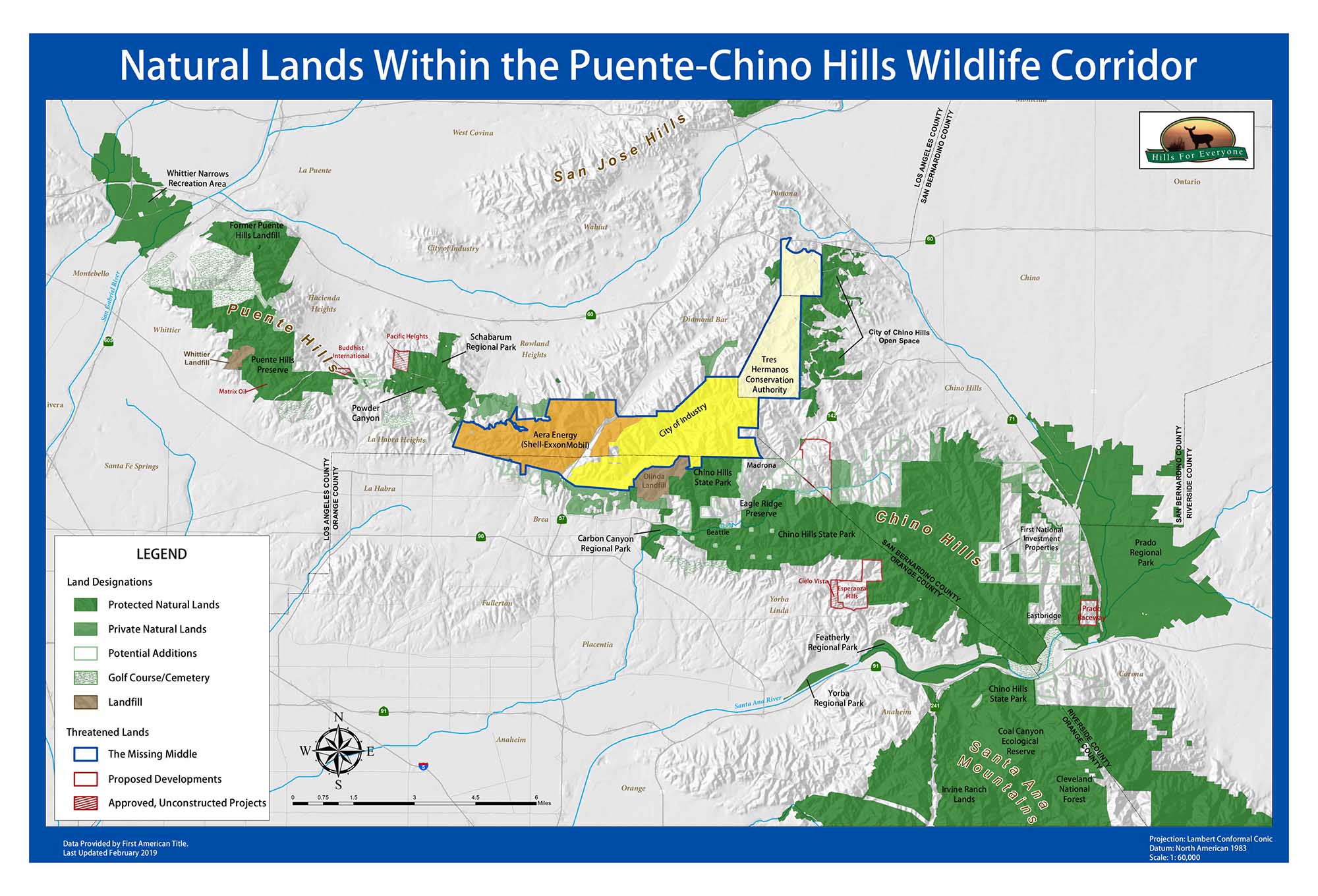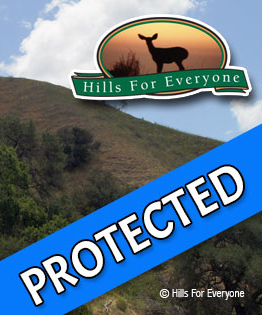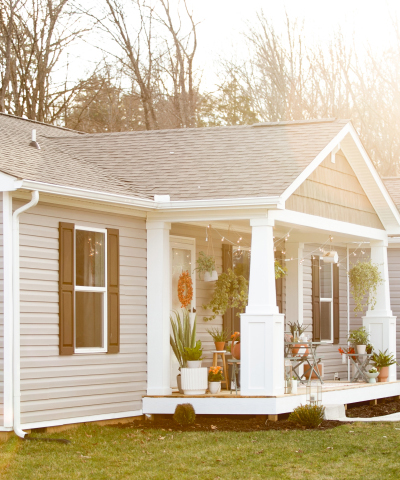Responsible Land Use
We must save our natural open spaces now, or lose them forever.

Our combined roughly 9,000 acres of natural open spaces are the last remaining large, unprotected tract of open space left in the San Gabriel Valley.
Rolling hills and valleys dotted with Oak woodland, coastal scrub, chapparal, canyons and creeks are part of our historic identity. Our natural open spaces and trails are islands of wildlife habitat which are important stepping stones, linking to larger natural open spaces such as Puente Chino Hills Wildlife Corridor and Chino Hills State Park.
Known as the "Missing Middle" these properties (white, yellow, and orange above) are critical to completing the Puente-Chino Hills Wildlife corridor. A corridor which provides habitat and transit for many threatened and endangered species. Saving these properties is critical to the ecological sustainability of the region.
They are one of the most biodiverse, ecologically sensitive hotspots in the entire world. Yes. Really. In the entire world. (Hotspots Defined. See map) These natural open spaces provide natural climate solutions which are proven to regulate our temperature, clean our air, filter our water, and provide emotional relief for all of us.

Contrary to what some may believe, none of the properties have yet been truly saved. Truly saving them would specifically look like purchasing the properties and making them all part of Chino Hills State Park.
Diamond Bar and Chino Hills will reap cultural and economic benefits as gateway cities to a unique Southern California ecotourism destination if that were to happen. We see eco-education opportunities, limited recreation (walking, hiking, equestrian, bike trails), carefully planned active sport fields.
A second best option would be to place strict conservation easements over the properties. Tres Hermanos has a partial easement, that has a huge loophole. The other two have nothing.
It is also imperative that "best conservation practices" be adopted in the properties' maintenance. However, none of the properties are seeing "best conservation practices" at this time.
Latest News
320 Acres Preserved. On July 29, 2020 the Mountains Recreation and Conservation Authority closed escrow on 320 acres...

New Program Offers Help for Mobilehome - Manufactured Homeowners to Resolve Complaints for Certain Violations...

Rolling Blackouts Reveal Need to Accelerate Clean Energy Action...

Rep. Cisneros votes to pass the bipartisan Great American Outdoors Act and Fund Public Lands...
